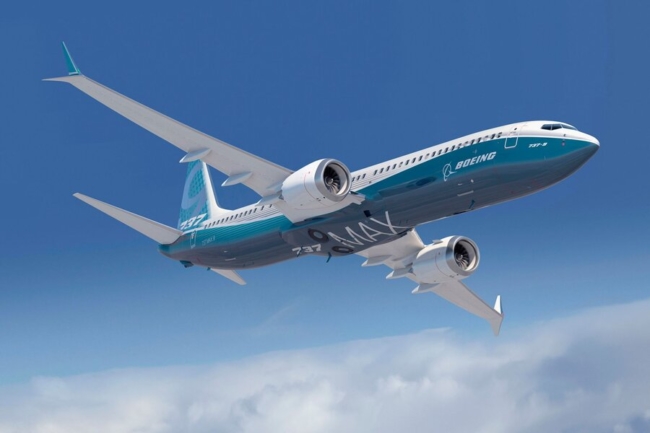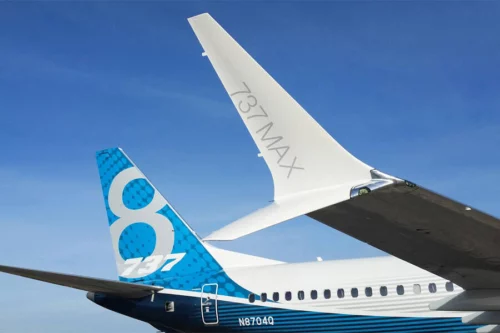“Technical design flaws, lack of transparency and failed oversight” led to two 737 MAX crashes
Links on Head for Points may support the site by paying a commission. See here for all partner links.
Last week saw the publication of the damning final US House Committee on Transport & Infrastructure report on the ‘Design, Development & Certification of the Boeing 737MAX,’ and it doesn’t take any prisoners.
The results of the report suggest that the deaths of 346 people on Lion Air 610 and Ethiopian Airlines 302 were avoidable had Boeing not downplayed the differences between the MAX and previous generation 737s.
The Federal Aviation Administration also gets its share of the blame.

It is criticised for delegating its oversight abilities to Boeing itself and even overruling its own experts at Boeing’s request:
“The MAX crashes were not the result of a singular failure, technical mistake, or mismanaged event. They were the horrific culmination of a series of faulty technical assumptions by Boeing’s engineers, a lack of transparency on the part of Boeing’s management, and grossly insufficient oversight by the FAA—the pernicious result of regulatory capture on the part of the FAA with respect to its responsibilities to perform robust oversight of Boeing and to ensure the safety of the flying public.”
Five fundamental flaws
The investigation found five central themes that occurred across the design, development and certification of the fourth generation of the Boeing 737, first introduced in 1968.
- ‘Production pressures‘ and a focus on cutting costs in order to compete with Airbus on the A320neo. This included the desire to avoid greater FAA certification, additional pilot simulator training and consequently increased costs.
- ‘Faulty design and performance assumptions‘, in particular with MCAS, the Maneuvering Characteristics Augmentation System that was implemented to compensate for the unbalanced physical characteristics of the aircraft thanks to its engines. The aerodynamic effect of the heavier, larger LEAP-1B engines meant that the 737 MAX would tend to ‘pitch up’ with its nose. MCAS was designed to reduce this effect in manual flight by forcing the nose down. Furthermore, MCAS was not based on a redundant system but could be caused by a single point of failure.
- A ‘culture of concealment’ which meant that neither flight manuals nor pilot training mentioned the introduction of MCAS on the 737 MAX or how to mitigate its effects in the event of a sensor failure. Boeing also concealed internal test data which revealed that it took Boeing’s own test pilot more than ten seconds to identify and respond to MCAS activation and which the pilot found ‘catastrophic’.
- ‘Conflicted representation‘ in which Boeing’s own employees, acting on behalf of the FAA during the certification process, failed to make the FAA aware of important information that could have improved the safety of the 737 MAX. In some cases, the ‘authorised representatives’ at Boeing raised concerns internally but were dismissed by other Boeing employees, resulting in no design changes.
- ‘Boeing’s influence over the FAA oversight structures‘ meant that FAA management sided with Boeing executives over the FAA’s own safety experts.

Boeing executive still thinks the 737 MAX is a success
Even more worryingly, former Vice President and General Manger of the 737 MAX program, who stepped down in April 2018, still considers the 737 MAX a successful program despite 346 avoidable deaths:
T&I Committee staff: In light of the two crashes and the fact that the MAX has been grounded for more than a year, would you consider the development of the MAX a success?
Keith Leverkuhn: Yes, I would. …. I do challenge the suggestion that the development [of the 737 MAX] was a failure.
Not a particularly good look.
Conclusion
For many years, the phrase ‘if it ain’t Boeing, I ain’t going’ was a boon for Boeing’s marketing teams, implying that Boeing had a superior safety culture.
The final committee report suggests a complete reversal of the sentiment:
“The Boeing Company needs to restore its reputation as a company focused squarely on safety and quality as Mr. Boeing envisioned and demanded. By heeding the horrific lessons from the MAX accidents, Boeing can and must take significant steps to create and maintain an effective, fulsome, and forthright safety culture. This would help to reinvigorate its workers’ morale and public confidence that Boeing is on the road to recovery stemming from the flaws that have been exposed as a result of the MAX crashes.
However, the Committee’s investigation raises questions regarding Boeing’s commitment to doing that or even to simply acknowledging that it made mistakes in the design, development, and certification of the 737 MAX aircraft.“
The only silver lining is that the 737 MAX is likely to be the most-scrutinised aircraft on the market once it completes re-certification by the FAA, European Union Safety Agency and Transport Canada. Any future 737 MAX deliveries should be extremely safe, although the report doesn’t instil confidence for Boeing’s other aircraft programs.
It will be interesting to see what happens with IAG’s Letter Of Intent for 200 737 MAX aircraft, with BA’s share originally due to be deployed at London Gatwick.
This is likely to be the cheapest short-haul aircraft deal negotiated in the last decade – Willie Walsh always envied how Ryanair achieved substantial discounts on large orders after 9/11 – but it seems unlikely at present that it will become a firm order.



 Rhys
Rhys 





Comments (68)